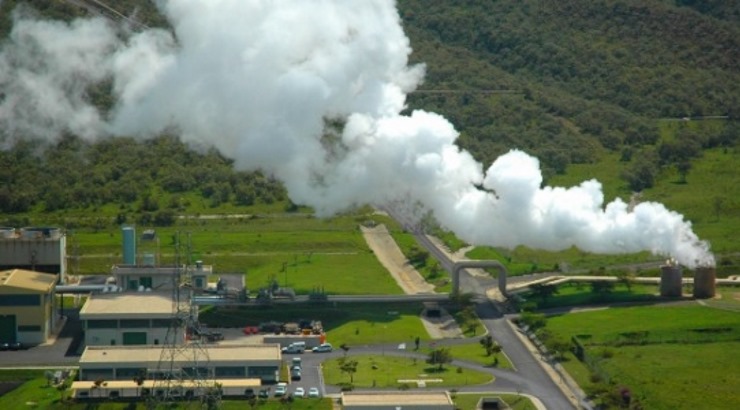Company News
Toshiba Wins Deal to Supply Turbines for Olkaria Upgrade
Deal awarded by China’s SEPCO III for the supply of steam turbines.

Japanese Toshiba Energy Systems (Toshiba ESS) has signed a deal with China’s SEPCO III Electric Power Construction Co. to supply steam turbines and generators for the upgrade of the Olkaria power plant in Naivasha.
According to the agreement, Toshiba ESS will supply the equipment that will be used for the renovation of Units 1 to 3 of Kenya’s oldest geothermal power plant, Olkaria 1.
The multi-billion-shilling initiative is expected to raise the geothermal plant’s total power output from 45 megawatts (MW) to 63MW, according to Toshiba ESS.
“[The project] will increase the power output of Units 1 through 3 from the current 15MW to 21 MW each, enabling them to achieve a higher output with less steam,” the company said in a press release on Tuesday.
RELATED: KenGen to Build Africa’s Biggest Wind Farm
The steam turbines and generators will be delivered to the site by December 2025, with the project scheduled for completion by 2026.
In 2022, KenGen, which has operated the Olkaria 1 since 1981, partnered with Toshiba ESS for Operation and Maintenance (O&M) services in geothermal power plants in developing countries, including East African nations outside Kenya.
The NSE-listed company later signed a deal with SEPCO for the rehabilitation of the plant under an Engineering, Procurement, and Construction (EPC) contract.
KenGen’s CEO, Peter Njenga, said the upgrade of the plant is a historic milestone for the company, reaffirming its commitment to sustainable energy solutions.
“By leveraging the latest advancements in geothermal technology, we aim to not only enhance the performance of the plant but also set new standards for renewable energy production in Kenya,” he said.
RELATED: KenGen Advances Plan for Sh110bn OlKaria Energy Park
The rehabilitation of Olkaria 1 aligns with Kenya’s energy goal and Vision 2030 initiative, which envisions a transition to 100% green energy by the end of the decade.
The development is part of the company’s revamped corporate strategy that seeks to add 3,000MW to the national grid within the next 10 years.
This will double the country’s generation capacity to 6,000MW.
KenGen is also advancing plans for the rehabilitation of its existing power plants to make them more efficient for sustainable generation of electricity.
With more investments announced for the coming years, it is evident that solar and geothermal will be Kenya’s main power sources within the next 40 years.
RELATED: Geothermal, Solar to Power Kenya’s Next 40 Years
This is based on the fact that the useful lifetime of a typical solar plant is 25 to 40 years, according to the U.S. National Renewable Energy Laboratory, after which its production capacity decreases below its initial power output rating.
Likewise, geothermal resources operate optimally for 20 to 30 years, after which their energy output may decrease significantly with time – making continued development uneconomical.














